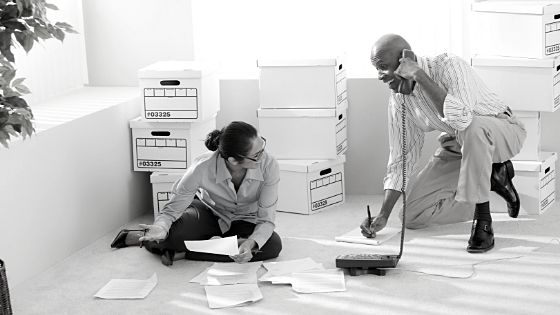Running a warehouse or factory, your Occupational Health and Safety requirements are often forefront in your mind. Keeping staff members safe while at work is extremely important and one of the best ways to do this is to ensure your floor marking colours are correct.

While some businesses will have their own colours marking out certain parts of their warehouse or factory flooring, there are some standard colours used across the world to mark out certain areas. By utilising these standard marking colours, anyone with the knowledge could walk into your workplace and instantly know what areas are caution or danger areas, where vehicles go and areas that need to be kept clear.
Why is Floor Marking Important?
Floor markings are an important part of OHS regulations in factories, warehouses and other workplaces. Having a floor marking plan is important – it allows you to have a balance between having enough (and the correct) floor markings without it being cluttered and confusing.
These floor markings are important in keeping pedestrians and vehicles safe and away from each other. They can prevent accidents between forklifts and other vehicles, show pedestrians where they should be walking and cut down on all the paperwork you need to fill out if there is an accident.
If it’s time to redo your OHS floor marking colours, following this guide is a great way to start.
Standard OHS Floor Marking Colours
Yellow – Yellow is used to notify people that it is an area to proceed with caution. It is used in walkways and aisles, often in areas that lead through work areas. It ensures people are on the lookout for other people working at heights, moving boxes or working on forklifts and other vehicles.
Red – Red is used to signify danger and is often related to fire. It is used to alert people they need to stop and look, whether on foot or in a vehicle. In case of a fire, it is used to notify where firefighting equipment is, allowing people to extinguish a fire quickly.
Blue – Blue generally tends to be used to mark out areas of information, or areas where equipment that is currently out of order or not in use is placed.
Green – The colour of safety. Green is utilised to mark out first aid areas, as well as safe walkways away from vehicles and other danger.
Orange – Used to mark out zones where vehicles are stored or operated, orange can be combined with both yellow and red to create an organised traffic system to keep everyone safe.
Black/Yellow – One of the most standard colours used, the black and yellow combination marks out health and safety hazards, advising vehicles and pedestrians to proceed with caution. In factories and warehouses, this colour is often used to mark out where dangerous chemicals are kept or often in use.
Red/White – Another combination that is often seen, the red/while markings indicates emergency areas or electrical points. These are areas that need to stay clear of obstructions in case of an emergency.
White – White is used as an indication that production is going on in the area. This is often used to indicate working areas.
Black – Warehouses and factories often use a black marked area to indicate where goods that have been sorted, packed or finished are stored. This area may combine with other colours allowing for the safe access of delivery trucks to pick up shipped stock.
A lot of businesses choose to go with reflective or coloured tape to mark out their floor area, and this is a good option if you regularly need to change your layout to fit growth or certain times of the year. However, if your work areas are fairly standard and you have no real need to change them in the future, you can have these areas marked out when your epoxy flooring is done.
If you’d like to find out more about permanent safety colour markings to meet OHS requirements, Epoxy Flooring Perth would love to hear from you. With years of experience in the epoxy flooring industry, we can work with you to get your OHS requirements met.



















